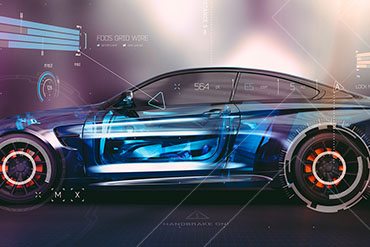
Revolutionizing Depot Charging: Hockey Stick Growth on the Cards
As the famous quote goes, when the gold rush happened in the U.S., it was not the gold diggers who made merry but the guys selling the shovels. Something similar is on the cards here with the growth of electric vehicles. The latest study by MarketsandMarkets suggests the market for Depot charging is well set to grow exponentially, showing rapid growth akin to the trajectory of a hockey stick. Sales of electric commercial vehicles (e-LCVs, e-MHCVs, and e-Buses) are set to skyrocket from approximately 0.6 million globally in 2023 to about 4.8 million by 2030 at 34.4% CAGR. As a result, the demand for depot charging solutions will follow and grow at an unprecedented rate, making depot charging a pivotal area to watch in the EV industry.
The depot charger and installation infrastructure market for new vehicles is expected to grow from $4.7 billion in 2023 to $30.7 billion by 2030 at a CAGR of 30.6%. With the number of commercial vehicles requiring depot charging solutions (the vehicle parc of ECVs under depot setting) projected to increase from 1.2 million in 2023 to a whopping 13.8 million by 2030, the market is gearing up for a massive expansion.
In a recent conversation with Sujay Sharma, CEO of bp pulse Americas, he agreed and highlighted the immense potential of the EV charging market. “The market is accelerating quickly and poised for another significant leap within the next few years, coinciding with the launch of new vehicle models and technological advancements,” Sharma remarked.
Region-wise, charger installations for new vehicles in North America are projected to grow from 21K in 2023 to 166K by 2030. Europe will see a rise from 70K to 365K during the same period, and the Asia-Pacific region is expected to increase from 194K to 606K.
Diverse Business Models
The charging infrastructure market is witnessing the emergence of diverse business models and approaches. Innovative business models like Battery-as-a-Service, Charging-as-a-Service, Decarbonization-as-a-Service, and Depot-as-a-Service are emerging alongside key financing methods like cash-based, debt-based, and leasing-based options. These developments are making depot charging setups more accessible and financially viable and reducing the risk and uncertainty that many fleet operators see in the energy transition of their vehicles.
In my previous firm, Ohm Global Mobility, where I was the CEO, we pioneered and executed the Vehicle-as-a-Service business model. This innovative approach involved a zero CAPEX-based and fully OPEX-oriented strategy. We seamlessly integrated a comprehensive digital suite with our charging infrastructure. This integration extended to assuming complete responsibility for the battery’s lifecycle, including its second life. Additionally, we incorporated the utilization of green electrons to power our vehicles.
These emerging business models are garnering considerable interest from investment sources such as Sovereign funds, Pension funds, and major infrastructure funds. This interest is driven by the perception of these investments as safe, “green” investments. Running operations like bus fleets is commonly viewed as a safe ROI, with IRRs ranging from 15% to 35%, depending on the region. Consequently, these ventures are increasingly recognized as pivotal infrastructure investments.
As per Arth Patel, CEO of Tirex Chargers, which operates some of the chargers of Ohm Mobility, “We in Tirex have experience installing over 550 charging stations across India, including 180–240KW DC chargers for electric buses. We find that the best way to reduce the total cost of ownership is by optimizing charger capacity and utilization through an ecosystem approach, involving all parties ranging from OEMs, charging system manufacturers, DISCOMs, software providers, and fleet operators.” Tirex is now 51% owned by Gulf Oil Lubricants (a part of the Hinduja Group) and serves as one of many examples of investments/acquisitions made by lubricant and oil & gas companies venturing into the EV value chain. Arth’s emphasis on reducing the Total Cost of Ownership (TCO) is crucial in an industry where fleet operators run their businesses on wafer-thin margins.
Shift from AC to DC
A notable trend observed in the market is the transition from alternating current (AC) charging to direct current (DC) charging, owing to its faster charging capabilities, reduced fleet downtime, enhanced operational efficiency, and to meet evolving customer demands. “We are totally all about DC fast charging, and that’s where we are completely focused and have been focused on since the beginning of 2018,” Sujay Sharma added.
I also happened to speak to the Chief Strategy Officer of Hitachi Europe, Chris Saul, who shared insights into the evolving nature of the EV charging industry. “In terms of EV charging infrastructure – of course, AC and DC charging will continue to co-exist, but Hitachi is focused on DC chargers, offering high-speed charging for vehicles such as buses and HGVs. In terms of energy management and smart charging, however, our software also works with AC chargers, which many customers with predominantly van fleets use,” he said.
A Crowded Space: Consolidation on the Horizon
With several big names and startups venturing into the depot charging market, it is undoubtedly a crowded space. Energy giants such as bp pulse (part of BP), Hitachi, and Siemens have ventured into depot charging, recognizing its immense potential. Furthermore, companies actively seeking alternatives to fossil fuels, such as BP and Shell, have also joined the fray. This crowded but dynamic environment is fostering innovative business models like Charging-as-a-Service and battery leasing programs.
Further, Chris added, “We need to continue to work together as an industry to ensure we can charge millions of vehicles in cities, towns, and on highways worldwide. The electrification of the transportation sector is one of the most important challenges we face that also presents exciting opportunities for impactful change.”
As the market evolves, we observe a bustling arena of traditional energy companies, oil companies pivoting from fossil fuels, and innovative startups, each bringing unique business models to the fore. The sector is fragmented but expected to undergo significant consolidation.
The Way Forward
The depot charging ecosystem is a complex network involving OEM utility companies, equipment manufacturers, software developers, charger installation companies, and service and maintenance entities. This diversity is a testament to the sector’s vibrancy and potential for growth.
Government support and incentives will play a significant role in accelerating the deployment of charging infrastructure. Policies that promote public-private partnerships, investment in R&D, and development of charging standards can drive market growth and foster innovation. In the U.S., the push towards fleet electrification is primarily driven by the government’s commitment to ensure 50% of vehicle sales are zero-emission by 2030. This policy is a significant catalyst for both vehicle manufacturers and fleet operators to invest in electrification.
Collaboration among stakeholders, including automakers, energy companies, and charging network providers, is imperative to create unified standards and establish a cohesive charging ecosystem.
The strategies of industry giants like BP Pulse and Hitachi further illuminate the market’s trajectory. Outlining BP’s multifaceted approach, from retail forecourts for passenger cars to GigaHubs for B2B and B2C charging and acquisitions like Travel Centers of America, Sujay added, “We intend to have 100,000 fast charging globally, that’s DC fast charging points in the market by 2030. We see the entire power value chain as an almost end-to-end play for BP, moving into a different energy vector.”
At the same time, Saul emphasized Hitachi’s commitment to a broad service range, spanning technology to software solutions. He highlighted the necessity of a collaborative industry approach to build infrastructure supporting mass EV adoption, underlining Hitachi’s dedication to the electrification landscape.
80% of the Forbes Global 2000 B2B companies rely on MarketsandMarkets to identify growth opportunities in emerging technologies and use cases that will have a positive revenue impact.
- Food Packaging Market Size Set for Strong Growth Through 2030 Amid Rising Demand for Convenience Foods
- Fertilizers Industry Set to Grow at 4.1% CAGR Through 2030
- Leading Automated Guided Vehicle Companies 2024: An In-depth Analysis
- CHARGED UP: SHIFT TO E-MOBILITY AND THE EVOLUTION OF TRANSPORTATION
- Global Automotive Market: Predictions For 2024
Conclusion

Note: As published in Forbes.
- Hypercharger Market by Port Type (CCS, MCS, ChaoJi, NACS), Hypercharging Compatible Vehicle Sales by Vehicle Type (Passenger Cars, Light Commercial Vehicle and Heavy Commercial Vehicle), and Region - Global Forecast to 2030
- EV Battery Market by Battery Type (Li-ion, NiMH, SSB), Vehicle Type (PC, Vans/Light Truck, MHCV, Bus & OHV), Propulsion, Battery Form, Material Type, Battery Capacity, Method, Li-ion Battery Component, and Region - Global Forecast to 2035
- Electric Vehicle Market by Vehicle Type, Propulsion, Vehicle Connectivity, Component, End Use, P-EV market by EV Architecture, Top Speed, Drive Type, Body Type, H-EV market by Configuration, MHEV market by Topology, and Region - Global Forecast 2035
- Electric Mid- and Large (9-14m) Bus Market Technology Landscape, Trends and Market Analysis by Propulsion (BEV, FCEV, HEV/PHEV), Configuration (Light & Heavy Duty), Application (City/Transit Bus, Coach, Midi & School Bus) and Region - Global Forecast 2030


